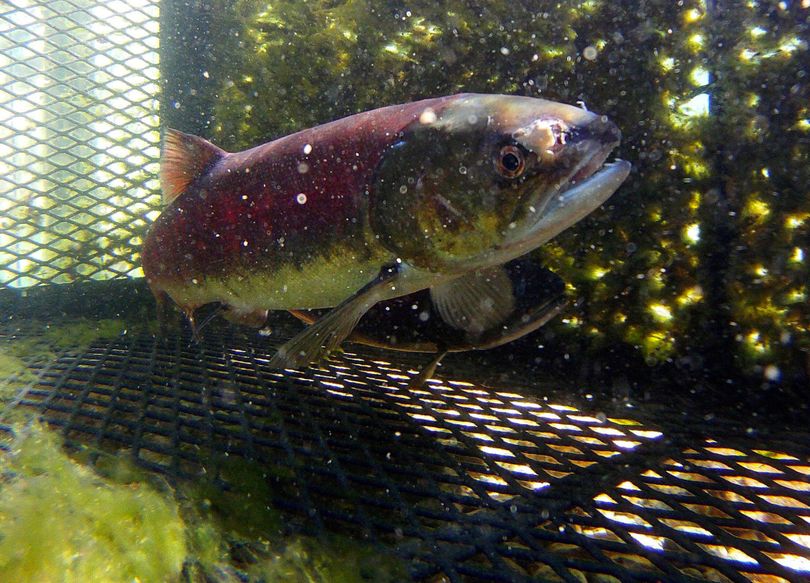Snake River sockeye running toward recovery

ENDANGERED SPECIES -- Once on the brink of extinction and still too close for comfort, Snake River sockeye surpassed an important milestone this week.
Through Friday, 1,348 sockeye have been trapped in the Sawtooth Basin, the most since the run was placed on regulatory life support and a captive breeding program was initiated more than 20 years ago.
Read on for an update from the Lewiston Tribune on the status of this remarkable fishery that runs upstream 900 miles past the unnatural barriers of Columbia and Snake River dams:
By Eric Barker/Lewiston Tribune
Following decades of struggle, sockeye that return to Redfish Lake and other large lakes near the headwaters of the Salmon River bottomed out in the late 1980s and early 1990s. Returns were often in the single digits, and in some years not a single adult completed the journey from the ocean. Sockeye were protected as an endangered species in 1991 and a captive breeding program began the same year.
Under the program designed to preserve the genetics of the fish and keep the run from blinking out, returning adults were bred in captivity and the bulk of their offspring spent their entire lives in a hatchery setting. Numbers were slowly bolstered to allow more and more smolts to be released to migrate downstream to the ocean.
Returns remained meager to modest for several years and then made a jump starting in 2008, when 650 sockeye returned to the basin. That was followed by 833 in 2009 and 1,322 in 2010. This week, the 2014 run topped the 2010 run and is now the third-largest since 1956 - when 1,381 sockeye returned.
"Just based on how fish are coming back into the basin, we may surpass that 1956 number," said Mike Peterson, an Idaho Fish and Game senior research biologist at Nampa. "Certainly this is the highest number of Snake River sockeye that have crossed over Lower Granite (Dam) and the highest number of adults trapped since the captive brood program initiation."
In 1961, 4,351 sockeye returned to the basin, the most ever recorded. But that pales in comparison to returns before the fish were counted at weirs. Fisheries biologists don’t know exactly how many sockeye once made the journey from the Pacific Ocean to the deep, clear and cold lakes at the base of the Sawtooth Mountains. An Idaho State University study led by professor Bruce Finney estimated the run once numbered between 25,000 to 40,000 fish. Redfish Lake reportedly got its name because the fish, which turn crimson while spawning, made the lake shimmer red.
The run was nearly choked out with the 1910 construction of Sunbeam Dam on the Salmon River, about 20 miles downstream from Redfish Lake Creek. The crude concrete structure, which was breached in 1934, had little to no fish passage during its lifespan and fisheries biologists are not certain if the run was re-established by resident kokanee salmon or if enough adults were able to make it through the dam to allow the run to persist.
Now with numbers improving, the run could be poised to make another significant jump. Last year, the Springfield Fish Hatchery was built near Blackfoot to boost production of sockeye. The first set of juveniles raised there will be released next year, and by 2017 Peterson said the hatchery should hit its full production goal of 1 million smolts per year. More juveniles released should lead to more returning adults. This year’s return is based on the release of only about 165,000 smolts.
But for now, program officials are content to wait and see how much higher this year’s return will climb. Between 10 to 20 sockeye have been trapped at weirs in recent days. And while the run appears to have peaked, it could persist for a number of weeks.
"We are kind of excited to see where we end up," Peterson said.
